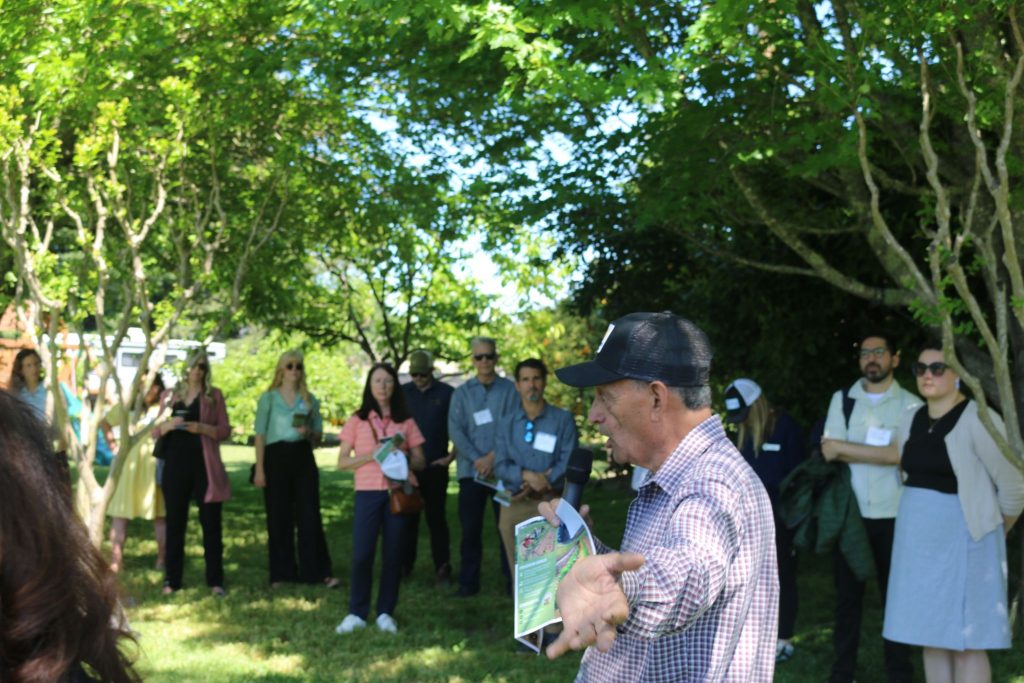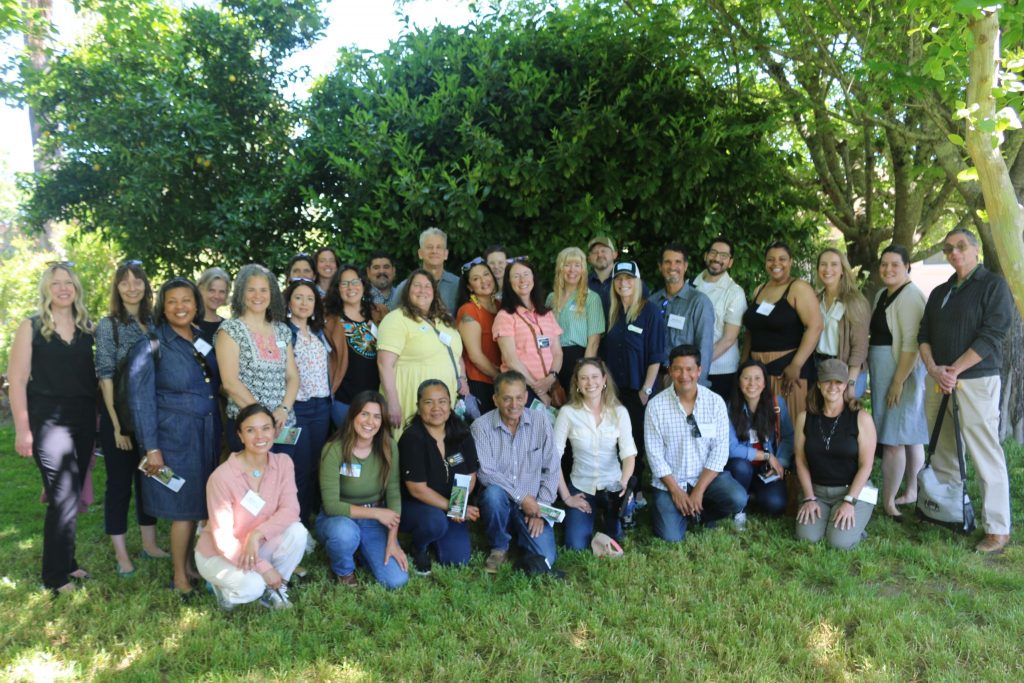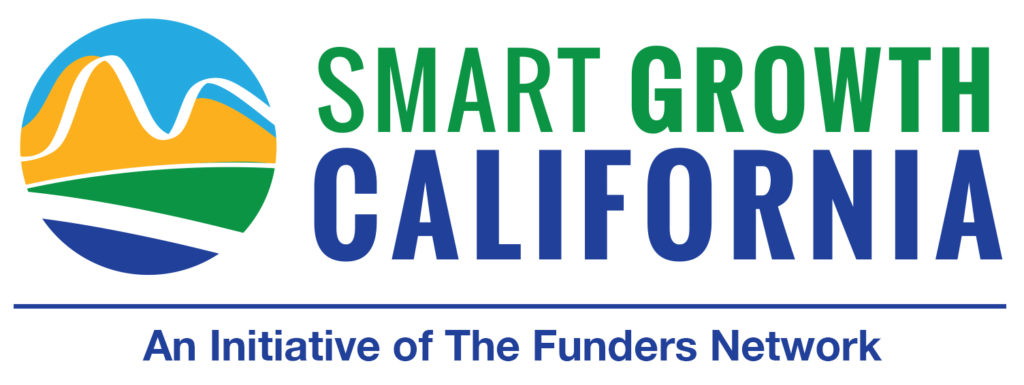
Ezequiel “Zeke” Guzman speaking to funders in Jardín del Pueblo. For additional photos, check out this Linkedin Post from the Great Communities Collaborative
Shade trees softened the sun as we stepped onto Jardín del Pueblo, a vibrant community farm in Healdsburg where local farmworkers grow their own food and build skills for the future. Founder Zeke Guzman greeted us with warmth, sharing the origins of his farm — a story deeply rooted in resilience and community.
It was the perfect springboard for a day of learning in Sonoma and Marin counties about what’s possible when government, grassroots organizations, and philanthropy come together to tackle challenges ranging from food insecurity and housing to healthcare access and climate resilience.
Organized by the San Francisco Foundation’s Great Communities Collaborative (GCC), the tour highlighted a recent evolution in GCC’s strategy: a shift toward supporting place-based, cross-sector collaboratives in historically underserved communities.
A hallmark of this approach is GCC’s intentional engagement with public sector leaders at both the state and local levels. That commitment was evident from the start, with Erin Hughes, Executive Director of the Strategic Growth Council, and Ena Lupine, who manages the California Climate Investments Technical Assistance Program, joining the tour. At other stops, local government leaders rolled up their sleeves alongside community partners, the kind of collaboration that’s essential to solving complex issues.
Jardín del Pueblo: Where Food, Culture, and Community Take Root
The spirit of partnership and community-led action was on full display at Jardín del Pueblo, our first stop. The garden is a labor of love that Guzman founded on his own property. On weekends, about 40 volunteers (many of them farmworkers themselves) gather to grow culturally meaningful foods like chilies, tomatoes, hibiscus, and nopales. The produce is shared with local farmworker families, but what’s cultivated here goes beyond nutrition — it’s about identity, connection and empowerment.
Parked alongside our group as we listened to Guzman was a Monarch MK-V electric tractor, donated by an anonymous benefactor via the Sonoma Land Trust. This $89,000 machine was a game-changer, Guzman told us. It not only expanded the farm’s sustainable capabilities but also created hands-on training opportunities for volunteers in modern agricultural practices. Guzman, who is also president of Latinos Unidos del Condado de Sonoma, a local non-profit that provides food and financial aid to farmworkers and their families, is already dreaming bigger, with plans for more planting space and a children’s garden.
With support from partners including the Community Foundation Sonoma County, Jardín del Pueblo is becoming a model for what’s possible when grassroots leadership is supported and scaled.
Caritas Village: A Healing Space for the Unhoused
From Healdsburg, we traveled to downtown Santa Rosa to visit Caritas Village, a place that redefines what a homeless shelter can be.
Peaceful, dignified, and thoughtfully designed, Caritas Village offers more than shelter. It’s a full-service community hub.
Alongside emergency shelter for families experiencing homelessness, the campus includes permanent affordable housing, classroom and gathering spaces, and an on-site Federally Qualified Health Center (FQHC) that expands access to medical care for residents and the broader community.
This co-located medical clinic has proven to be a vital piece of the puzzle. By bringing healthcare to where people already are, the clinic helps remove some of the biggest barriers to care: transportation, stigma, and long wait times. It’s had ripple effects too, helping individuals better manage chronic conditions, reduce ER visits, and stabilize their health, which is often a critical first step toward securing permanent housing.
Major donors to Caritas Village included Kaiser Permanente, a member of Smart Growth California.

In Marin: Listening to Community Voices
Our final stop took us to San Rafael’s Canal District — a vibrant, largely immigrant community shaped by both systemic neglect and strong resilience. Densely populated and predominantly Spanish-speaking, the Canal District stands in stark contrast to both the public image and demographics of Marin County, which are affluent, suburban, and predominantly white. The community is situated in a low-lying area adjacent to the San Francisco Bay, prone to flooding during high tides and storms.
We visited the site of a planned pedestrian and bike bridge that will link the Canal to Third Street, improving safety and access for those who walk, bike, or take transit.
At Canal Alliance, CEO Omar Carrera was joined by San Rafael’s City Manager and Vice Mayor to spotlight the Marin County Multisector Collaborative’s efforts to break down silos and advance equity across the region. This cross-sector collaboration exemplifies the interconnected nature of climate and equity work —spanning public, nonprofit, and community-based partners. It’s supported by multiple grants, including one from TFN’s Partners for Places program and another from the Strategic Growth Council’s Regional Climate Collaborative program, reflecting the multi-sectoral, layered nature of the initiative. We also heard powerful updates from leaders in Marin City and West Marin, whose work is grounded in lived experience and a deep commitment to racial justice.
What Stood Out Most
Throughout the day, it was clear that local leaders are driving real progress in their communities. Whether growing food, improving healthcare, or building infrastructure to address climate challenges, we saw how partnerships across sectors, built on trust, equity and investments, show promise for meaningful, lasting change. At each stop, we saw what’s possible when funders, public agencies, and grassroots organizations work together with a shared commitment to community-led solutions.
As Ricardo Huerta Niño, Associate Director of the Great Communities Collaborative, put it at the end of the day: “What we are seeing here are models [of] how communities build for the long-term.”


